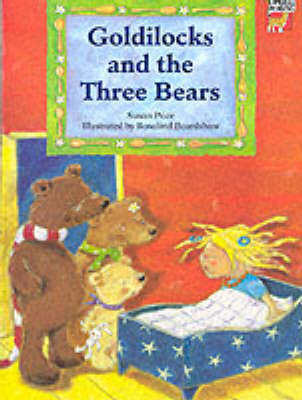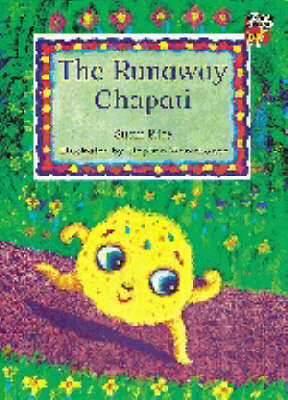Cambridge Reading
6 total works
The Elves and the Shoemaker Big Book American English Edition
by Susan Price
Published 14 September 2000
Cambridge Reading is a major scheme providing stimulating books and support materials for the teaching of reading and the development of literacy throughout the elementary years. I Broke my Arm is one of 20 texts in the Sight Vocabulary: Non-Fiction strand of the Beginning to Read phase. This strand features a range of text types and provides a comprehensive resource for teaching key sight vocabulary.
A popular traditional tale, Goldilocks and the Three Bears Big Book is ideal for shared reading activities with children in the Foundation stage/Primary 1 (ages3–4). The Big Book is designed to be used with the associated children's books (pack of 4): My House; The House; Somebody's Been Eating My Porridge!; Just Right!. Goldilocks and the Three Bears Big Book spans the Key Skills (High Frequency Words) strand and the Language Patterns (Patterned and Natural Language) strand of Cambridge Reading. The Big Book can be used to develop children's Text and Sentence level skills through systematic coverage and repetition of four key, high frequency words a, and, my and the, and through the use of patterned and natural language of the speech refrains. The other two traditional tales (also comprising a Big Book and 4 associated children's books) are The Elves and the Shoemaker and The Runaway Chapati.
A major reading scheme for the teaching of reading and the development of literacy throughout the primary years. A popular traditional tale, The Runaway Chapati Big Book is ideal for shared reading activities with children in the Foundation stage/Primary 1 (ages3–4). The Big Book is designed to be used with the associated children's books (pack of 4): A Chapati; My Face; Run, Run!; Stop!, Come Back!. The Runaway Chapati Big Book spans the Key Skills (High Frequency Words) strand and the Language Patterns (Patterned and Natural Language) strand of Cambridge Reading. The Big Book can be used to develop children's Text and Sentence level skills through systematic coverage and repetition of four key, high frequency words a, and, my and the, and through the use of patterned and natural language of the speech refrains. The other two traditional tales (also comprising a Big Book and 4 associated children's books) are The Elves and the Shoemaker and Goldilocks and the Three Bears.
The Elves and the Shoemaker Big Book
by Susan Price, Jacob Grimm, and Wilhelm Grimm
Published 20 May 1999
A popular traditional tale, The Elves and the Shoemaker Big Book is ideal for shared reading activities with children in the Foundation stage/Primary 1 (ages3–4). The Big Book is designed to be used with the associated children's books (pack of 4): The Shoe; My Clothes, We Tap, Tap, Tap; Shiny Shoes. The Elves and the Shoemaker Big Book spans the Key Skills (High Frequency Words) strand and the Language Patterns (Patterned and Natural Language) strand of Cambridge Reading. The Big Book can be used to develop children's Text and Sentence level skills through systematic coverage and repetition of four key, high frequency words a, and, my and the, and through the use of patterned and natural language of the speech refrains. The other two traditional tales (also comprising a Big Book and 4 associated children's books) are Goldilocks and the Three Bears and The Runaway Chapati.
Cambridge Reading is a major reading scheme which provides stimulating books and support materials for the teaching of reading and the development of literacy throughout the primary years.
Goldilocks and the Three Bears Big Book American English Edition
by Susan Price
Published 20 July 2000
Cambridge Reading is a major scheme providing stimulating books and support materials for the teaching of reading throughout the elementary years. Cambridge Reading Big Books provide texts in a size that is big enough for the teacher to give large groups of children a shared experience of the same text and to demonstrate early reading skills and strategies. Goldilocks and the Three Bears Big Book forms part of the Traditional Tales strand of the Preparing to Read phase for children aged 3-4. The books are attractively produced in large format, and are intended for the teacher to read to the class.


